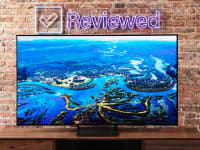Pros
-
Excellent color
-
Great for casual gamers
-
Reliable smart platform
Cons
-
Not very bright
-
No local dimming
-
Lackluster design
The Q6 stands toe-to-toe with the Hisense U6K. They’re roughly the same price and offer many of the same features. From a performance standpoint, the U6K (and its elevated mini-LED display tech) have a significant edge, but the Q6 nevertheless makes the most of its hardware and picture processing.
The Q6 is bright enough for most living spaces, but it struggles to drive enough brightness to smaller highlights, leading to ho-hum HDR performance. Its lack of local dimming can also cause the picture to look hazy, especially during dark content.
If all you’re after is a better-than-average TV with accurate color and competent picture processing, however, the Q6 is a great choice.
About the TCL Q6 LED TV
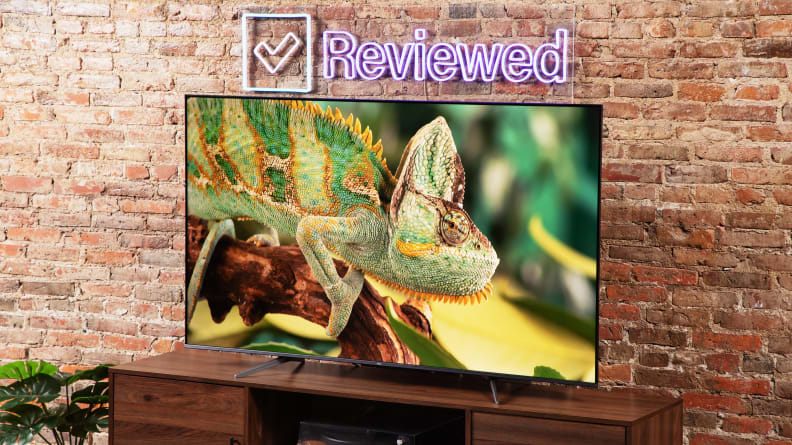
The TCL Q6 ranges in size from 55 to 85 inches.
The TCL Q6 is available in four sizes ranging from 55 to 85 inches. Our review unit is a 65-inch model that we received on loan from TCL.
Here’s how the series shakes out from a price standpoint:
- 55-inch (TCL 55Q650G), MSRP $499.99
- 65-inch (TCL 65Q650G), MSRP $699.99
- 75-inch (TCL 75Q650G), MSRP $899.99
- 85-inch (TCL 85Q650G), MSRP $1,599.99
Due to the nature of the Q6’s display hardware, we don’t expect there to be significant differences in performance between sizes.
TCL Q6 specs
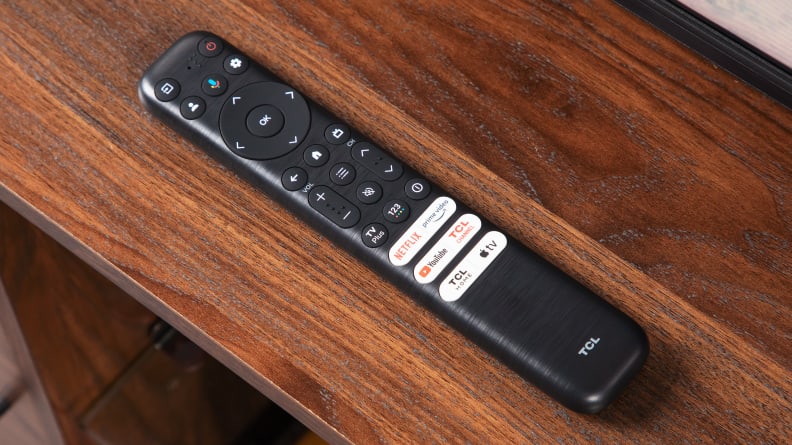
Google TV OS allows access to all the major streaming services, and the Q6 also supports Apple AirPlay, Chromecast, Amazon Alexa, and Google Assistant.
- Resolution: 4K (3,840 x 2,160)
- Display type: Direct LED with quantum dots
- HDR support: Dolby Vision, HDR10+, HDR10, HLG
- Dolby Atmos: Yes
- eARC support: Yes
- Native refresh rate: 60Hz
- Smart platform: Google TV
- Color: DCI-P3 color space/10-bit chroma resolution
- Variable Refresh Rate (VRR): Yes
- Auto Low Latency Mode (ALLM): Yes
- Other features: Apple AirPlay, Apple HomeKit, Amazon Alexa, Google Assistant, Google Chromecast
Connectivity
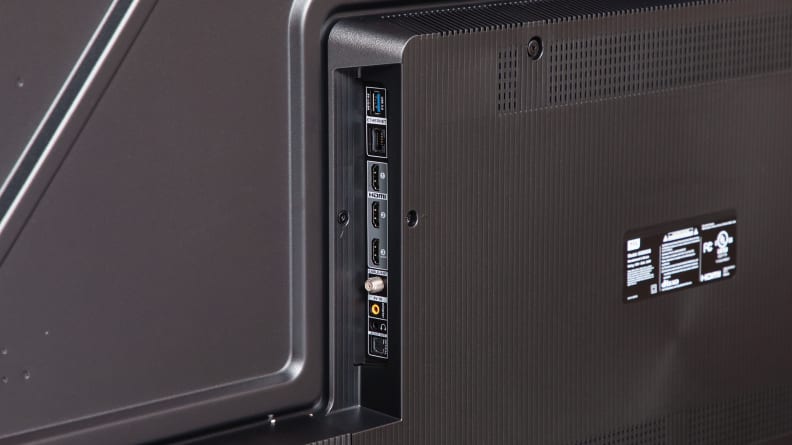
The Q6 has only three HDMI 2.0 ports while competitors have four.
The TCL Q6 is equipped with just three HDMI inputs, which is something to keep in mind if you’re hoping to connect several devices to your next TV. Most options in this price range offer four HDMI inputs, so this puts the Q6 at a bit of a disadvantage.
Here’s what you’ll find in a side-facing cutout on the back of the panel:
- 3x HDMI 2.0 (4K @ 60Hz, 1x HDMI ARC/eARC)
- 1x USB 3.0
- RF connection (cable/antenna)
- Ethernet (LAN) input
- Digital audio output (optical)
- Composite input (with adapter)
- RS-232C
- 3.5mm headphone jack
Performance Data
Before testing each TV, we make sure the panel is on and receiving a continuous signal for at least 2 hours. Our 65-inch Q6 received this standard warm-up time before any readings were taken. In addition, the TV received the latest firmware updates at the time of testing.
For both SDR and HDR tests, we’re using TCL’s Movie picture mode. We’ve chosen this setting because of its accuracy, but performance may vary depending on which picture mode is enabled. For example, you might experience a brighter picture with a different mode enabled, but it may negatively affect color temperature and overall color accuracy.
To get a sense of the TV’s average performance, we use a standard ANSI checkerboard pattern for most of our basic contrast tests. We also use white and black windows ranging from 2% to 100% to test how well the contrast holds up while displaying varying degrees of brightness.
Our peak brightness measurements are taken with sustained windows ranging in size from 2% to 100% (full screen) to represent the TV’s peak brightness over a sustained period of time. Specular highlights (like brief flashes of reflected light) might reach higher brightness levels, but not for sustained periods of time.
All of our tests are created with a Murideo Seven 8K signal generator and tabulated via Portrait Displays’ Calman Ultimate color calibration software.
I'll expand on our test results throughout the review, but for now, here are some key takeaways:
- HDR contrast (brightness/black level): 456.8 nits/0.072 nits (ANSI checkerboard)
- SDR contrast (brightness/black level): 458.6 nits/0.077 nits (ANSI checkerboard)
- HDR peak brightness (sustained): 482.81 nits (2% white window)
- HDR color gamut coverage (DCI-P3 1976 uv/8-bit): 92.92%
- HDR color gamut coverage (BT.2020 1976 uv): 67.83%
- SDR color gamut coverage (Rec.709): 97.8%
For all tests, the Q6’s Color Temperature setting was set to its warmest setting. The following Brightness settings were disabled: Dynamic Contrast, Black Stretch, Dynamic Brightness, and Micro Contrast. In addition, all motion-related enhancements were disabled, as well as Gradation Clear (located in the Clarity settings submenu).
For SDR tests, the Q6’s Brightness setting was set to 100. For HDR tests, Dynamic Tone Mapping was disabled.
What we like
Excellent color and picture processing
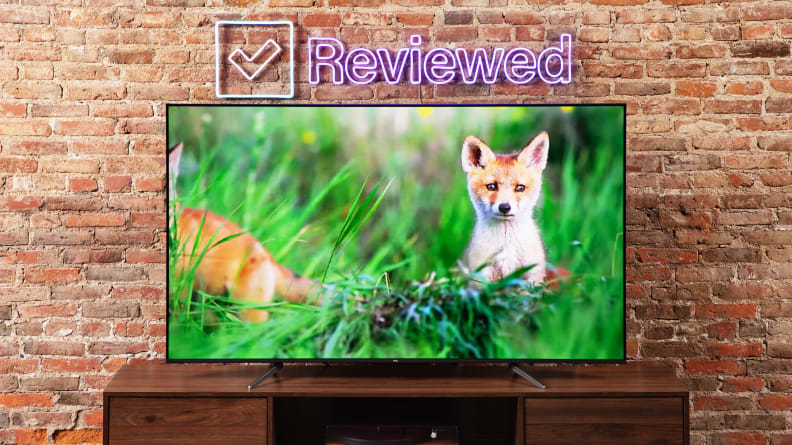
Within its price category, the Q6 delivers great accuracy and color gamut coverage.
When talking with anyone about TVs, I often emphasize just how good affordable 4K TVs look now when compared to a 1080p TV from, say, 2013. The TCL Q6 is a prime example. If you’ve been watching a decade-old, full-HD TV, even a modest, meat-and-potatoes 4K upgrade is likely to blow you away. All it has to do is look good enough, and thankfully, the Q6 looks better than “good enough”—it looks downright great.
There are certainly some issues you should know about (which I’ll cover soon), but the Q6 clears the most important bar that an affordable TV can clear: Nothing looks weird. The visual expression is clean, the colors are accurate, and it maintains this competency across all content types.
While you’re certainly free to experiment with whatever picture settings look good to you, I’d recommend using the Q6’s Movie picture mode, which delivers an impressively accurate picture for a TV in this price range. Aside from a slightly blue white point, there’s almost nothing to complain about. In both SDR and HDR, I measured a DeltaE of below 2.5. (DeltaE is a figure that describes perceptible color error to the human eye, with 3 being the threshold at which color error becomes noticeable at a glance.)
A mid-range LED TV in 2023 would be tripping out of the gate if it didn’t offer quantum dot-color, so it’s nice to see them here. According to our lab tests, the Q6 covers about 93% of the HDR color gamut (DCI-P3). While not as voluminous as some of its competitors, most people will like what they see.
The Q6 also does a bang-up job upscaling sub-4K content, which is important if you spend a good amount of time watching basic cable, over-the-air broadcasts, or older, full-HD Blu-rays. On the whole, the TCL’s picture processing might sneakily be the Q6’s best feature. There are many aspects of the Hisense U6K’s picture that look better, but the Q6 offers superior upscaling and isn’t saddled with motion-related color fringing found on the Hisense.
Gamers aren’t forgotten
The Q6 offers a competitive set of gaming features for its cost, and casual to semi-serious players will appreciate what’s here.
The Q6 supports 4K gaming at 60Hz, but not 4K gaming at 120Hz. There is a feature that allows players to play games at 120fps with VRR enabled, but this will cut the resolution down to 3840 x 1080p. AMD FreeSync and Auto Low Latency Mode (ALLM) round out the experience.
If you’re looking for a TCL Q Class TV with more of an emphasis on gaming (a 120Hz native refresh rate, for example), you’ll have to step up to the Q7 Series or the top-tier QM8 Series.
Google TV is a reliable (if sluggish) companion
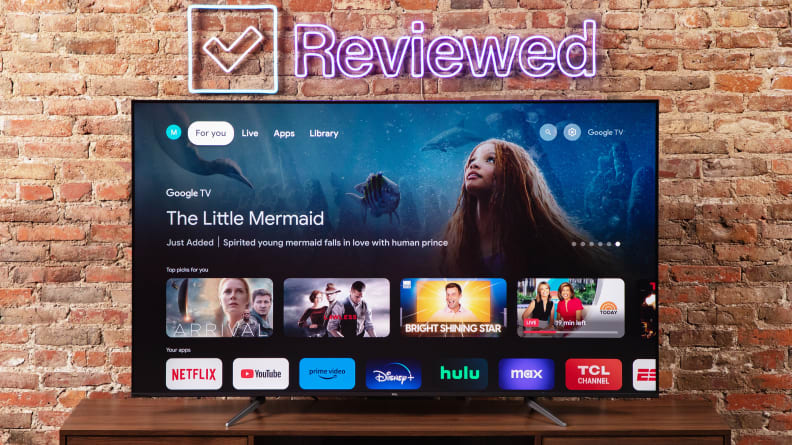
While the platform offers everything you need for streaming your favorite shows, Google TV runs slower on the Q6 than other TVs from this year.
With just three HDMI inputs in tow, it’s especially important for the Q6’s smart platform experience to sing. After all, you’ll run out of ports pretty quickly if you intend on connecting a soundbar. And while the Q6 doesn’t necessarily sing with full orchestration and five part harmony, it can carry a tune just fine.
This year, most TCL smart TVs arrive with Google TV pre-installed. (If you’re looking for a TCL TV with Roku built in, you’ll have to step all the way down to its lower-end S Class.) Google TV isn’t shy about ads and recommended content, but thankfully, it’s pretty easy to navigate around that extra stuff. Critically, Google TV offers an incredibly thorough selection of downloadable apps, and jumping in and out of inputs and settings menus is easy enough.
Google TV doesn’t run quite as fast and buttery-smooth as it does on the higher-end TVs I’ve tested this year, but throughout my time with the TV, its sluggishness never rose above a minor annoyance.
Pretty accommodating during off-axis viewing
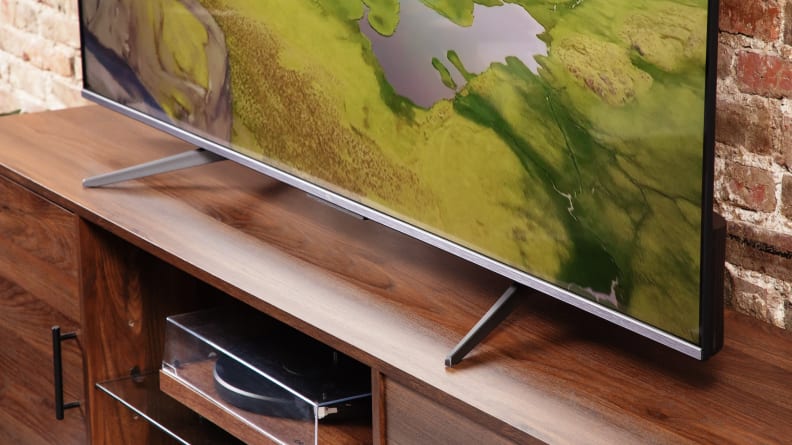
The Q6 has pretty decent viewing angles—during daylight and at night.
The Q6’s relatively simplistic display hardware makes for some drawbacks that I’ll discuss shortly, but the simplicity also has its perks. Since the TV is never adjusting its backlight in real time, there are very few unwanted visual distortions when watching from an off-axis position. In fact, I was quite impressed with the Q6’s ability to maintain contrast and color saturation as I moved about the room, watching it from various angles. It’s not perfect, but it’s accommodating enough that the crowd-pleasing, 75- and 85-inch models don’t seem like a questionable proposition.
To be clear, a direct, head-on viewing angle is still the best seat in the house, and you’re more likely to notice some minor light bleed around the bezels if you’re sitting off to the side. That said, excessive light bloom around bright objects (a typical viewing angle-related issue for most full-array LED TVs) isn’t a factor.
What we don’t like
Not bright enough for meaningful HDR
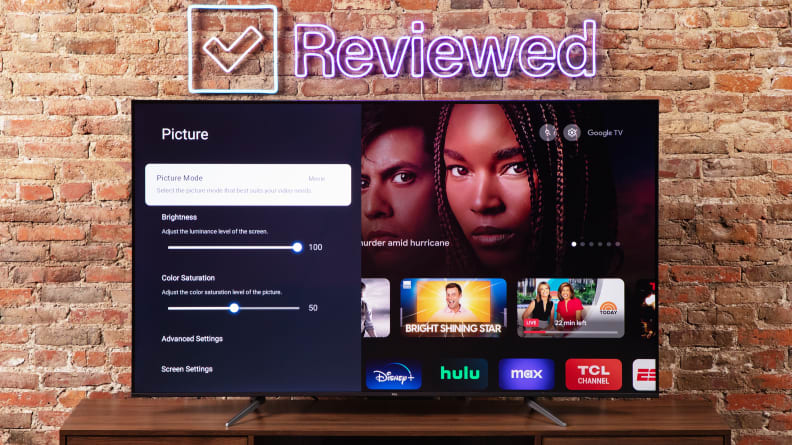
Its limited brightness keeps the Q6 from delivering impactful HDR.
While understanding that a mid-range LED TV won’t be as bright as a high-end LED TV, the Q6 nevertheless disappoints on this front, especially when it comes to showcasing HDR content.
First, some good news: The Q6’s average picture brightness is high enough to hold up during the day in most rooms, provided they’re not drenched in sunlight. Unsurprisingly, it looks better in the dark, but if you tend to do most of your viewing during the day, the Q6 has you covered.
It struggles most with highlights, especially during HDR content (like high-profile streaming shows and most 4K Blu-rays). This format takes advantage of the bright, colorful properties of contemporary displays, but since the Q6 isn’t able to drive an appropriate amount of brightness to small, intense highlights, the cinematic quality of HDR content suffers.
Specular highlights on the Q6 top out between 450 and 500 nits, and a small, 2% white window produces almost exactly the same amount of brightness as a 50% window. For context, the similarly priced Hisense U6K produces HDR highlights in the 600- to 700-nit range—a modest increase, but a meaningful one, nonetheless. The U6K’s average picture brightness is roughly the same as the Q6, but the former packs more of a punch when it comes to highlights. As a result, HDR content pops a bit more on the Hisense.
Once again, it’s worth reiterating that, for people upgrading to 4K/HDR for the first time, the Q6’s picture is almost guaranteed to satisfy. Folks upgrading from an older mid-range 4K TV will probably notice a jump in brightness, too. On the whole, it’s bright enough to stand out in most living spaces, which is the most important metric vis-à-vis brightness.
Hurt by its lack of local dimming
The Q6’s biggest shortcoming is its relatively basic display. While not uncommon for a budget-friendly TV, the Q6’s reliance on a direct LED backlight with no hardware-based local dimming puts it at a disadvantage with some of the competitors in this price range. Without even a modest number of separate LED zones to control, the Q6 can’t control its contrast as precisely as a TV with these zones.
Last year’s TCL 5-Series—which was released for exactly the same price as the Q6—is a good example of how even a relatively rudimentary implementation of full-array local dimming can elevate a mid-range TV’s picture. The 5-Series may not offer granular contrast control across several hundred LED zones (which is standard for high-end LED TVs), but its 35 zones do have a significant positive impact on its ability to keep the dark portions of the picture dark and the bright areas bright.
The Q6 does an OK job of producing a relatively high-contrast picture with a pleasant expression, but dark scenes in particular tend to look kind of grayish-blue, since most of the display is getting dosed with light even when there are very few bright objects in the frame. This limitation—combined with the Q6’s habit of over-brightening coming out of absolute black—creates a picture with a somewhat milky haze.
During scenes where most of the screen is black (sequences in space or opening credits, for example), the screen takes on a lumpy, bluish texture, rather than the appropriately smooth, glossy-black appearance it’s intended to have.
While it’s important to keep our performance expectations in check when evaluating affordable, value-forward TVs such as the Q6, it’s not lost on me that the 5-Series, which is for all intents and purposes a spiritual precursor to the Q6, did feature local dimming.
The aforementioned Hisense U6K (a TV that can often be found on sale for less than the Q6) takes it a step further by implementing mini-LEDs, an even better variation of LED-based display hardware than the 5-Series’. The U6K’s local dimming performance isn’t perfect, but its impact on picture quality shouldn’t be underestimated.
Lackluster design

One of the Q6’s feet was made difficult to install after a small, pinhead-sized nubbin broke off the bottom of the panel.
The first thing I noticed about the Q6 upon lifting it out of its styrofoam nest is just how clangy-sounding and hollow-feeling the back of its panel feels. The metallic cover along the back has a significant flex to it, and unfortunately, it kind of reminds me of the underside of a car hood.
The Q6 rests atop a pair of angular, boomerang-shaped feet—a quintessential design flourish of contemporary budget-friendly TVs. You can position the feet one of two ways: in a narrow configuration, close to the center of the panel, or in a wider configuration, with the feet close to the corners. I appreciate the flexibility (and you will, too, if you have a narrower media console), but I don’t appreciate how an important piece of the panel (a tiny nubbin designed to help guide the foot into place) suddenly broke off during installation.
Should you buy the TCL Q6 LED TV?
Maybe, but shop around first
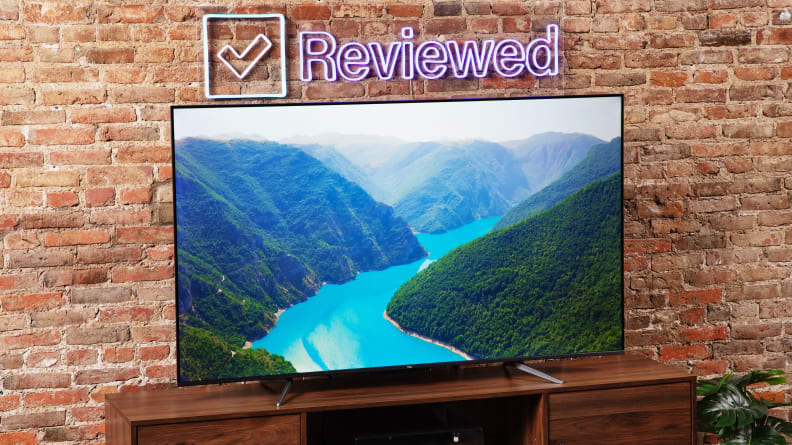
The TCL Q6 LED TV has some good things going for it, but we'd still recommend checking for deals on other comparable TVs first.
The Q6 is a great pick for people who just want a reliably good-looking 4K picture, an easy-to-use smart platform, and maybe some light gaming support. In other words, if you’re finally ready to jump into the world of 4K television and you’d rather do it without breaking the bank, the Q6 is a safe bet.
However, if you’re wondering what all the fuss is about when it comes to HDR content, or if you’re looking to squeeze as much performance-related upside as possible out of a mid-range TV, I’d recommend considering some alternatives. Right now, the heaviest hitter in this price range is the Hisense U6K. It delivers more impactful HDR, better contrast control, and comparable set of gaming features. Right now, the 65-inch U6K is about $50 cheaper than the 65-inch Q6.
The TCL Q7 (which we’re gearing up to evaluate at the time of publishing) will set you back a few hundred dollars more than the Q6, but given its display hardware, it’s almost certainly going to perform at a higher level than the Q6. For dedicated gamers, the benefits are even greater.
If you’re not picky about picture quality and you don’t do much gaming, the Q6 is just the ticket. It’s a reliably good-looking TV across all types of content, and it’s decidedly easy to use.
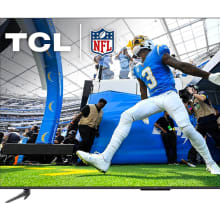
The TCL Q6 will satisfy shoppers looking for an affordable 4K upgrade, but those looking to maximize their dollar should consider the competition.
$548 at AmazonMeet the tester
Michael Desjardin graduated from Emerson College after having studied media production and screenwriting. He specializes in tech for Reviewed, but also loves film criticism, weird ambient music, cooking, and food in general.
Checking our work.
Our team is here for one purpose: to help you buy the best stuff and love what you own. Our writers, editors, and lab technicians obsess over the products we cover to make sure you're confident and satisfied. Have a different opinion about something we recommend? Email us and we'll compare notes.
Shoot us an email


